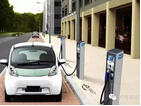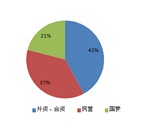In 2018, the new energy vehicle market is quietly coming to an end.
The reason for this is because the China Automotive Industry Association recently sent a "good news": from January to November this year, the production and sales volume of new energy vehicles reached 1.054 million and 1.03 million, respectively, both of which broke the million mark.
At this time last year, the production and sales of new energy vehicles did not reach 800,000 units. Under the pressure of the cyclical downturn of the economy this year, why can new energy vehicles “turn against the wind”? What happened to the new energy vehicle market in 2018?
At the end of the year, the country is a through train to review the major policies and important events related to the development of new energy vehicles in 2018. Through these bits and pieces, we may be able to clarify the development and direction of new energy vehicles in the past year.
Get rid of dependence
In February this year, the Ministry of Finance, the Ministry of Industry and Information Technology, the Ministry of Science and Technology, and the four ministries and commissions of the National Development and Reform Commission jointly issued the "Notice on Adjusting and Improving the Financial Subsidy Policy for the Promotion and Application of New Energy Vehicles." Among them, the financial subsidies for new energy vehicles in 2018 are generally reduced by more than 30%.
In fact, the new energy vehicle subsidy slope began in 2017. In 2017, the subsidy will fall 20% on the basis of 2016. In 2018, the retreat will be more intense and more detailed.

The “double points” scoring method is a bit complicated, but its more purpose is to urge the car companies to reduce the fuel consumption of traditional fuel vehicles and the development of new energy vehicles. If the car company does not meet the standard, it will be subject to penalties for the declaration and production of suspended fuel consumption products.
In fact, before the country did not propose a "double points" policy, the actual participation of new energy vehicles is not much. According to the data, less than half of the 124 companies that sell or import passenger cars in China produced new energy vehicles in 2016. After the strong stimulus of the “double points” policy, the market share of new energy vehicles began to increase gradually.
It is worth mentioning that at the time of the initial implementation of the New Deal, domestic brands accounted for more than 90% of the new energy vehicle market share. Later, some foreign brands cooperated with domestic car companies in order to adapt to the double point policy. Among them, there are representatives of the public to join the Jianghuai, Zotye United Ford, Great Wall and BMW.
The strong stimulus of the “double points” policy, coupled with the government’s gradual relaxation of investment controls on new energy vehicles, it is foreseeable that such similar joint ventures may continue to increase in the future, and some unexpected new alliances may emerge. In the public eye.
















 RCCN WeChat QrCode
RCCN WeChat QrCode Mobile WebSite
Mobile WebSite







